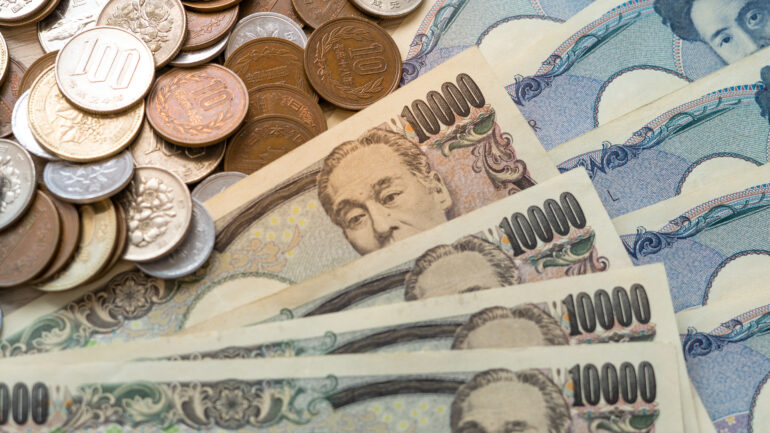‘Carried’ Away: The Yen’s Surge and the Global Market Unwind

In recent weeks, a significant financial disruption sent the Japanese yen soaring, rattled global stock markets, and heightened risk aversion across the board. Here’s a detailed look at what happened, why it matters, and the underlying factors driving these events.
A carry trade involves borrowing in a low-interest-rate currency – like the Japanese yen – and investing in higher-yielding assets elsewhere, such as US Treasuries, corporate bonds, or equities. This strategy is profitable as long as the interest rate differential remains favourable, and the funding currency (in this case, the yen) does not appreciate significantly.
Over the past decades, Japan’s near-zero interest rates made the yen a prime candidate for carry trades. US hedge funds and other global investors have borrowed yen at virtually no cost and deployed the capital into US Treasuries, investment-grade (IG) corporate bonds, the “Magnificent 7” tech stocks, and even into volatility strategies like shorting the VIX (a measure of market volatility).
The Catalyst: A Shift in Monetary Policy
The first domino upending this long-standing strategy was the Bank of Japan (BoJ) raising interest rates for the first time since 2007 on July 31, 2024. Concurrently, the US Federal Reserve has been signalling a potential reduction in its own policy rate – the fed funds rate – that it had raised to a several-decade high of 5.25%-5.50% as a response to spiking inflation post the COVID pandemic.
The primary cause for the heavy unwinding of the yen trade was, however, US employment data released a week after the BoJ’s rate hike, which showed slight weakening in its labour market, heightening concerns the Fed’s rate cutting cycle would be considerably deeper and more rapid than previously anticipated. This shift in monetary policy, coupled with weaker-than-expected economic data, drastically reduced the yield spread between US and Japanese assets, leading to a rapid appreciation of the yen against the dollar – from roughly 161/$ to a high of around 142/$ in just a few weeks.
The Market (Over)reaction
The sudden strengthening of the yen triggered a wave of margin calls on carry trades since narrowing interest rate differentials between the BoJ and Fed would make their existing trades much less profitable. Investors who had borrowed yen to fund their positions were forced to sell off assets to meet these margin requirements. This resulted in a sharp sell-off in investment-grade bonds, the Magnificent 7 stocks, and a spike in the VIX.
- Investment-Grade Bonds: The unwinding of carry trades had a particularly pronounced impact on the IG bond market, with a rapid sell-off led to a significant widening of credit spreads as investors liquidated positions to cover their yen-denominated liabilities.
- Magnificent 7 Stocks:The concentrated nature of investments in these high-performing tech stocks exacerbated the sell-off. As these stocks were liquidated en masse, it created a feedback loop, driving prices down further and forcing additional selling.
- VIX Surge: The VIX, often referred to as the “fear gauge,” spiked to 65 on Monday — levels typically associated with severe financial crises. The fact that the VIX reached such heights, despite the absence of a broader economic crisis, underscores how extreme the carry trade positioning had become. This spike too was driven largely by the unwinding of short VIX positions that had been funded by yen carry trades.
Another critical aspect of this unwind is the substantial increase in cross-border yen borrowing over the past few years. According to ING, cross-border yen-denominated loans have surged by over $700 billion just since 2021. Much of this borrowing is unhedged, as the cost of hedging dollar exposure against the yen has been prohibitively high.
This unhedged borrowing became a significant risk factor when the yen began to appreciate. As borrowers scrambled to cover their positions, the demand for yen surged, exacerbating the currency’s appreciation and further tightening the squeeze on carry trades. If this trend of yen appreciation continues, we could see more hedging activity, which would put additional upward pressure on the yen and could lead to further market volatility.
A Temporary Market Dislocation or a Sign of Things to Come?
The rapid reversal in the VIX – from 65 back down to 24 in just a few days – suggests that many market participants view this event as a temporary dislocation rather than the start of a broader market downturn. While the carry trade unwind was severe, the market has quickly stabilised as investors reassessed the risks and opportunities in the current environment.
However, underlying risks remain. The narrowing yield spread between US and Japanese rates could continue to drive yen strength, potentially leading to more unwinding of carry trades if the BoJ continues to normalise its monetary policy. Additionally, the large-scale cross-border borrowing in yen could create ongoing vulnerabilities if global financial conditions tighten.
As investors return their focus to incoming economic data, the question remains: Was this a one-off event, or a precursor to more significant shifts in global financial markets?


